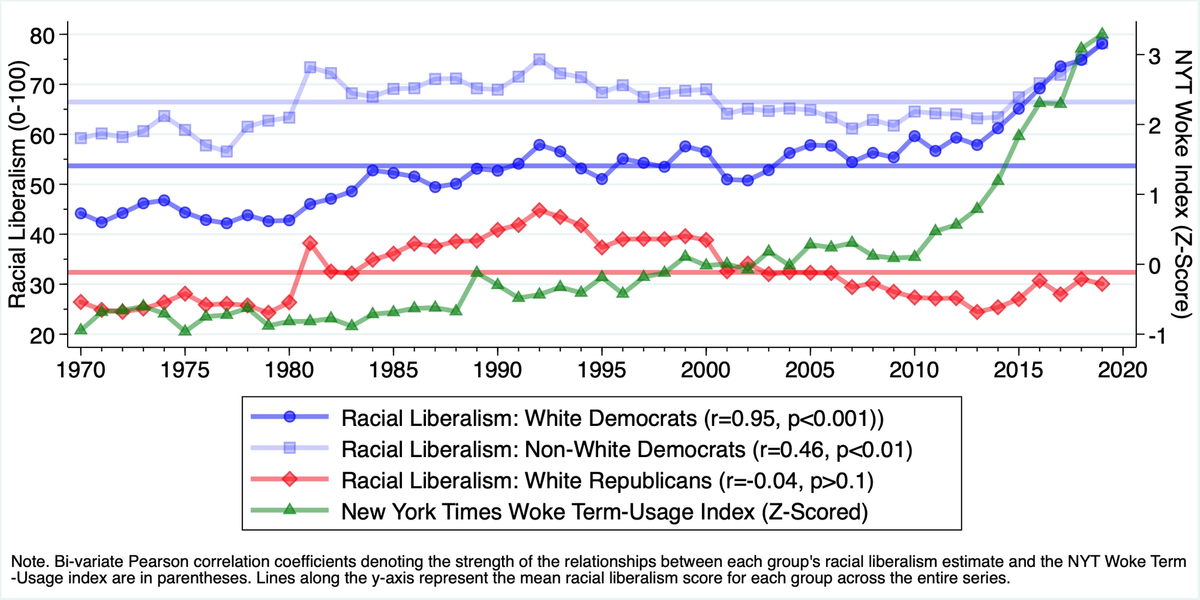Media Coverage of Race
Countless articles have been published in recent weeks, often under the guise of straight news reporting, in which journalists take for granted the legitimacy of novel theories about race and identity. Such articles illustrate a prevailing new political morality on questions of race and justice that has taken power at the Times and Post—a worldview sometimes abbreviated as “wokeness” that combines the sensibilities of highly educated and hyperliberal white professionals with elements of Black nationalism and academic critical race theory. But the media’s embrace of “wokeness” did not begin in response to the death of George Floyd. ...
...
There is a body of social science research arguing that shifts in race-related media coverage have a causal effect on racial attitudes. For instance, political scientist Paul Kellstedt has provided evidence showing that shifts in racial attitudes follow shifts in race-related news content. But, while building on Kellstedt’s findings, my own research suggests that not all demographics are equally or even similarly responsive to such media trends. Specifically, I find that the causal effects of race-related media coverage are strongest for white Democrats and liberals, weaker for nonwhite Democrats and liberals, and are largely nonexistent for white Republicans and conservatives. This differential effect is partly due to ideological differences in understandings of racial inequality, which influences how white liberals and conservatives respond (particularly in the moral-emotional sense) to related information.
Like Kellstedt, I compiled dozens of time series of racial attitudes—ranging from perceptions of discrimination and attributions of racial inequality to race-conscious policy attitudes—and ran them through an algorithm that was originally developed by James Stimson to generate singular aggregate indexes of general public policy liberalism. I then added the resulting “racial liberalism” index to my dataset of media term-usage, which provides the basis for the analysis in this article. While many of the terms were strongly correlated with the racial liberalism index, subsequent analysis showed that the latter was most uniquely associated with a scale (which I labeled the “Woke Term-Usage Index”) generated from the usage frequency of terms like, “privileged,” “systemic racism,” and “racial disparities,” in The New York Times.

